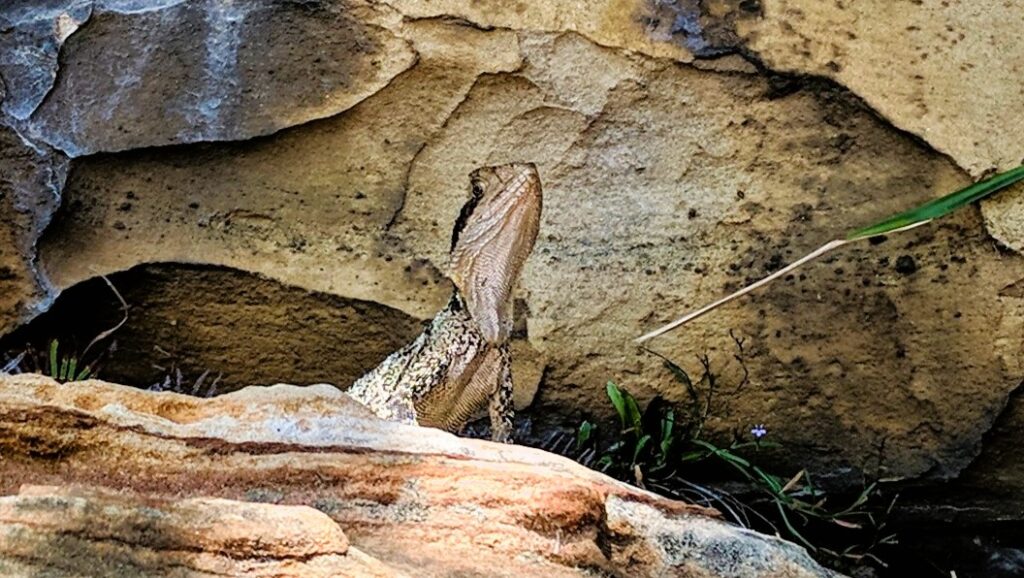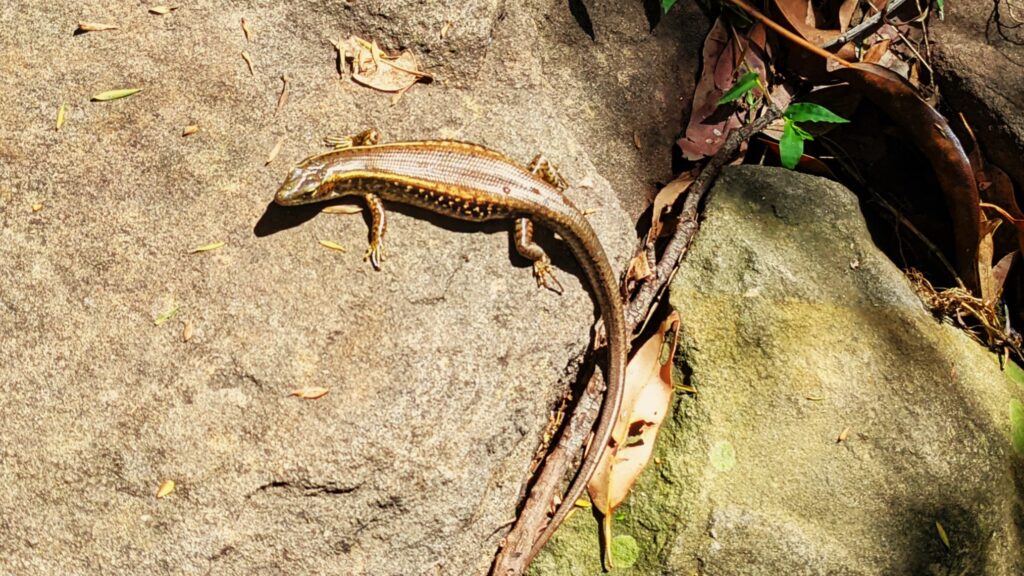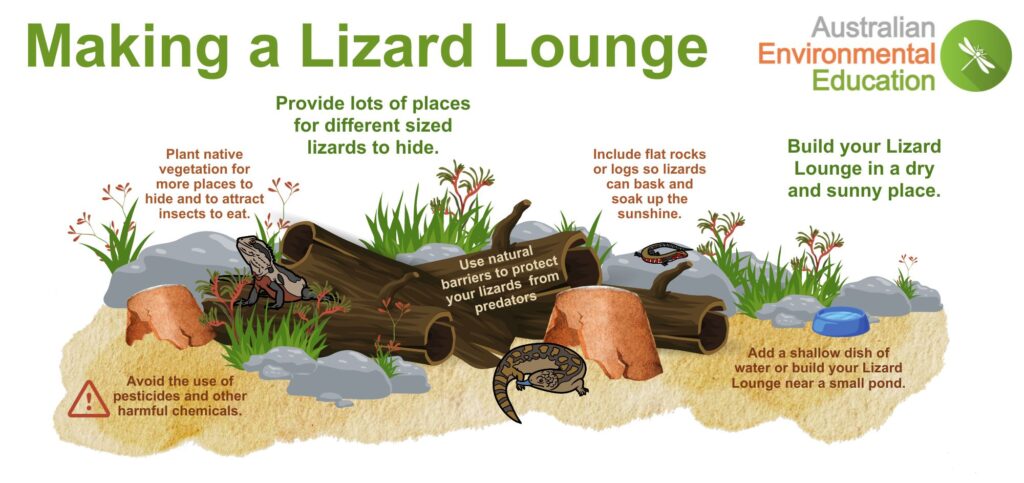Native bushlands and gardens provide a home for a variety of native Lizards. These cold-blooded reptiles like to bask in the sun. They are also shy and will hide under logs and rocks so you might not know how many different species are really living in your local area.


For those passionate about conservation and wildlife, making a Lizard Lounge is a great way to provide a safe haven for local reptiles. It also give you the opportunity to observe their behaviour and contribute to their conservation.
Designing your Lizard Lounge
Once you’ve familiarized yourself with which species live in your local environment, it’s time to design your lizard habitat.

Here are some key considerations:
- Shelter: Lizards require shelter to hide from predators and seek refuge from extreme temperatures. Incorporate natural features like rocks, logs, and dense vegetation to provide ample hiding spots.
- Basking Areas: Many lizard species are ectothermic, meaning they rely on external sources of heat to regulate their body temperature. Ensure your habitat includes sunny basking spots, such as flat rocks or logs, where lizards can soak up the sun’s rays.
- Water Source: While some lizard species obtain moisture from their food, others may require access to a water source for drinking and bathing. Consider adding a shallow dish or small pond to your habitat, ensuring it’s easily accessible and regularly maintained.
- Food Supply: Lizards have varied diets, ranging from insects and small invertebrates to vegetation and fruits. Planting native vegetation and incorporating insect-attracting features like flowering plants and compost piles can help provide a diverse food supply.
- Safety Measures: To protect your lizard habitat from predators and other threats, consider installing fencing or natural barriers. Additionally, avoid the use of pesticides and other harmful chemicals that could harm lizards and their prey.
Watch this great video from Gardening Australia on ‘How to Build a Lizard Lounge’.
Find out what else you can do to create a wildlife friendly backyard with the What’s in your Backyard activity series.

